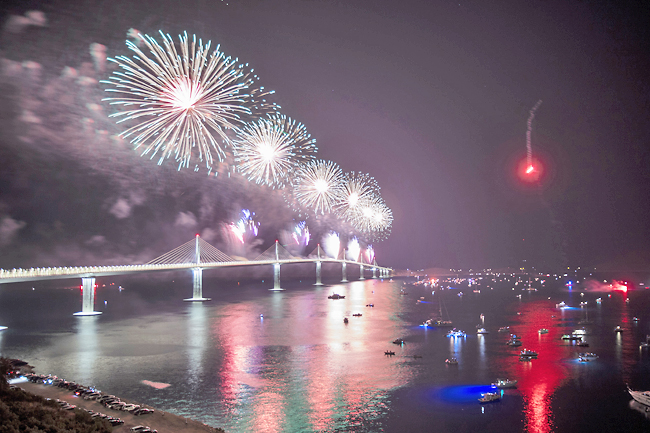ZAGREB, CROATIA (AP) – Croatia on Tuesday opened a long-awaited bridge connecting two parts of the country’s Adriatic Sea coastline while bypassing a small sliver of Bosnia’s territory.
Top officials and guests gathered in the evening for a formal opening ceremony that included a fly-over by military jets, speeches, performances and fireworks.
Earlier on Tuesday, many Croats braved summer heat to be among the first to cross the Peljesac bridge on foot as it opened for pedestrians ahead of the official inauguration.
Co-funded by the European Union (EU) and built by a Chinese company, the elegant, cable-stayed bridge with six pylons is a rare venture of its kind amid concerns in Europe over China’s bid to boost its economic influence through investment in infrastructure.
In a video message aired at the opening ceremony, Chinese Prime Minister Li Keqiang said the bridge “illustrates friendly relations” between his country and Croatia, but also between China and the EU.

“China and the EU present important political forces and leading global economic powers,” said Li.
The 2.4-kilometre bridge spans the Adriatic Sea to link Croatia’s mainland to the Peljesac peninsula in the south, allowing easier access to the country’s most important tourism destination – the medieval walled city of Dubrovnik.
Croatian Prime Minister Andrej Plenkovic described the day as historic for the country, which joined the EU in 2013 after splitting from the former Yugoslavia and going through a war in the 1990s.
“I am overwhelmed by the feelings of pride, joy and gratitude,” said Plenkovic.
The Yugoslav federation had no internal borders between its six republics, including Croatia and Bosnia. But when it broke up in the early 1990s, the two parts of Croatia’s Adriatic Sea coastline were split by a narrow strip of Bosnia.
Both residents and tourists had to pass border checks, which slowed down traffic and left the inhabitants of the southern area feeling isolated from the rest of the country.
That area includes Dubrovnik, a stunning medieval town that has been on UNESCO’s protected heritage list and is Croatia’s biggest tourist attraction.







